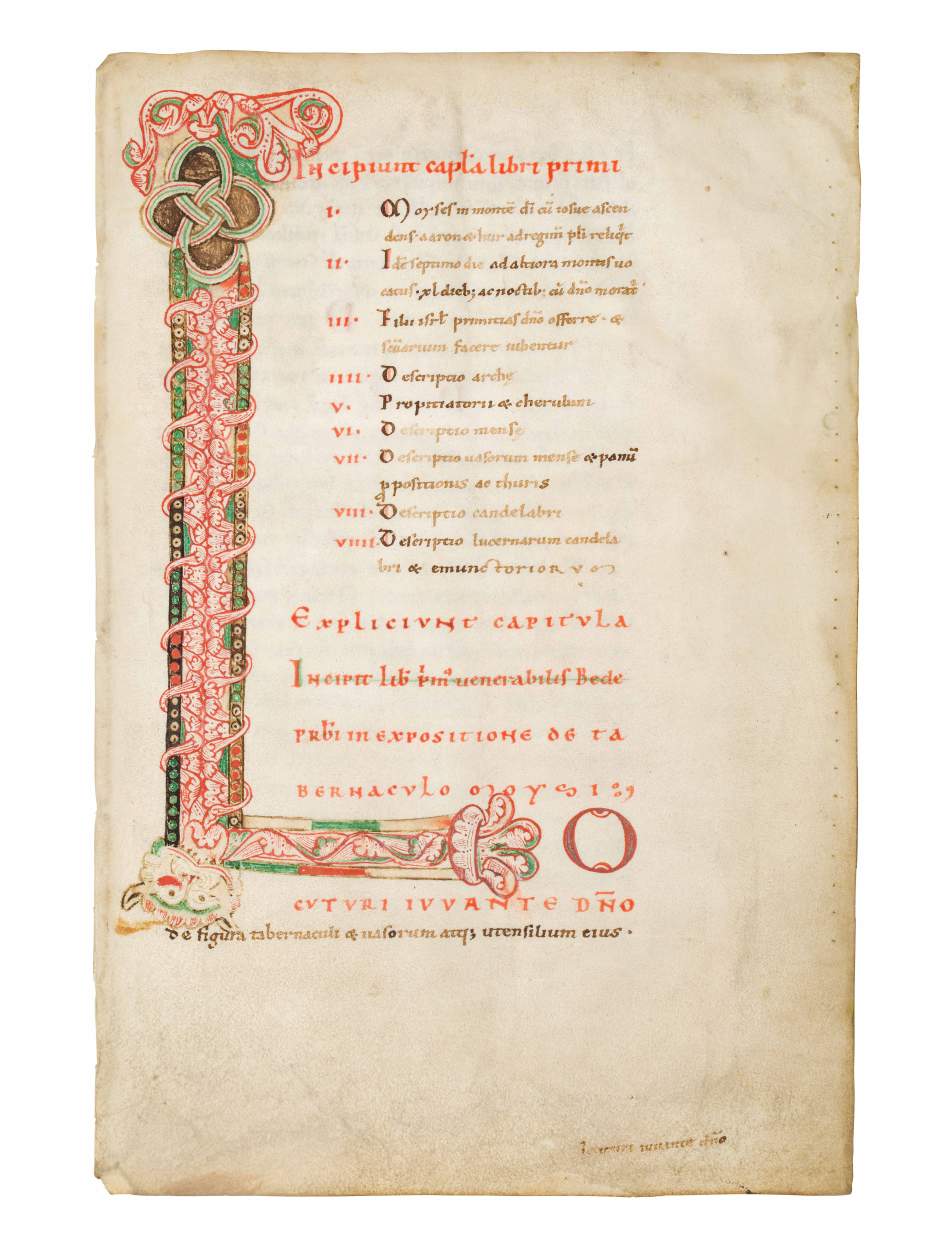

Initial L,
Leaf from a manuscript of Bede’s De tabernaculo, in Latin on vellum.
Norman England or the Continent, c. 1100.

The present stunning and rare leaf contains not only an exceptionally fine and large example of Romanesque decoration, but is also a highly interesting example of Norman or English script in the decades after the Norman Conquest of England. Both the script and the elaborate decoration appear to be of the late 11th- or early 12th century, and the use of ornamental capitals supports this early dating.
As is sometimes the case in manuscripts of this period, the decorative page was written by the ‘master’ scribe who left instructions in the lower margin for the painter of the decorated initial, whereas the verso of this leaf is characterized by the spiky calligraphy that was more typical for continental manuscripts but was also in use in English regions. The characteristic letter L(ocuturi), with twining, leafy vine decoration incorporating a lion mask and interlocking finials in deep green and red, is a type frequently encountered in England in this period.
This leaf was the first and therefore the most elaborate leaf in the parent manuscript containing Bede’s famous text, De tabernaculo. As an incipit page it presents, on the recto, a list of capitula of nine numbered chapters.
The author, Beda Venerabilis or the ‘venerable’ Bede (c. 673-735), is best known to us as the author of the History of the English Church and People. He was a Benedictine monk at the double monastery of St. Peter’s and St. Paul’s in the Kingdom of Northumbria. In this allegorical commentary, Bede interprets the Tabernacle that was built by Moses in the desert as a symbol for the Christian Church. Originally written in the early 720s, this text was the first Christian commentary on the relevant portions of the Book of Exodus, treating the text verse-by-verse.



